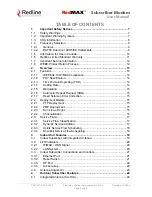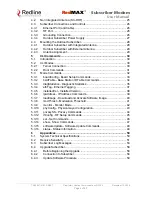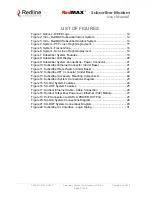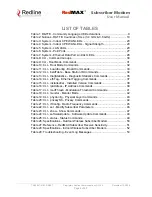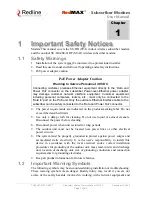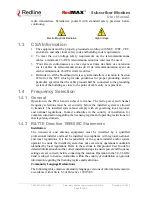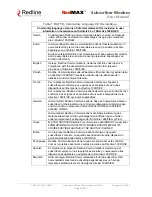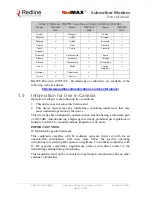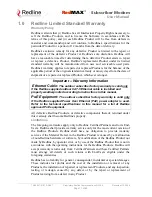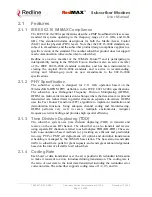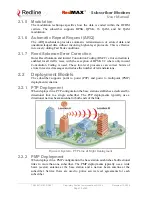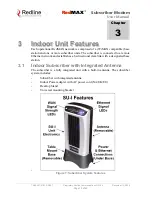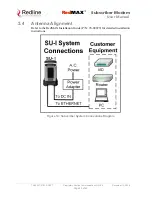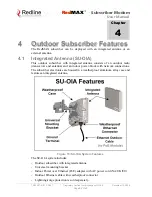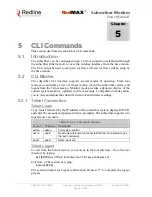
Red
MAX
™
Subscriber Modem
User Manual
70-00057-01-01-DRAFT
Proprietary Redline Communications © 2006
December
13,
2006
Page 17 of 60
with European Conference of Postal and Telecommunications Administrations
(CEPT) Recommendation 14-03.
The subscriber divides the available frequency band into channels. Allocation of
channels during deployment is dependent on spectrum availability in the licensed
FWA band (3400-3600 MHz) and local licensing requirements and conditions.
Channel selection allows planners to obtain the maximum geographic coverage,
while avoiding frequency contention in adjacent sectors.
2.3 Service
Flows
Service flows are a key feature of the 802.16 standard. A Service Flow represents
a unidirectional data flow having separate QoS settings for uplink and downlink.
Service flows provide the ability to set up multiple connections to each subscriber
in a sector.
Separate service flows can be established for uplink and downlink traffic, where
each service flow is assigned a unique service level category and separate QoS
settings. This feature allows segregation of high-speed/high-priority traffic from
less time-critical flows.
2.3.1 Service
Flow
Classification
Data packets are forwarded by the subscriber based on classification rules.
Classification rules require examining each packet for pattern matches such as
destination address, source address, or VLAN tag. All classification is defined at
the base station and the classification parameters are downloaded to the
subscriber.
A service flow is partially characterized by the following attributes:
1. A 32-bit Service Flow ID (SFID) is assigned to all existing service flows. The
SFID serves as the principal identifier for the Service Flow and has an
associated direction.
2. A 16-bit Connection ID (CID) is associated with each active SFID
(connection active).
3. A set of QoS parameters specifying the required resources. The principal
resource is bandwidth, but the specification may also include latency
requirements.
4. A set of QoS parameters defining the level of service being provided.
2.3.2 Dynamic Service Addition
Service flows are defined and stored in the base station. For each service flow to
be established, the base station sends a setup message to the subscriber specifying
the required set of QoS parameters. The subscriber responds to each request by
accepting or rejecting the setup message.
A service flow may be pre-provisioned or can be dynamically created and deleted
without service outage. This is useful for supporting multiple subscribers in a
single sector. New subscribers can be added and existing subscribers can be
removed or have service levels modified.

